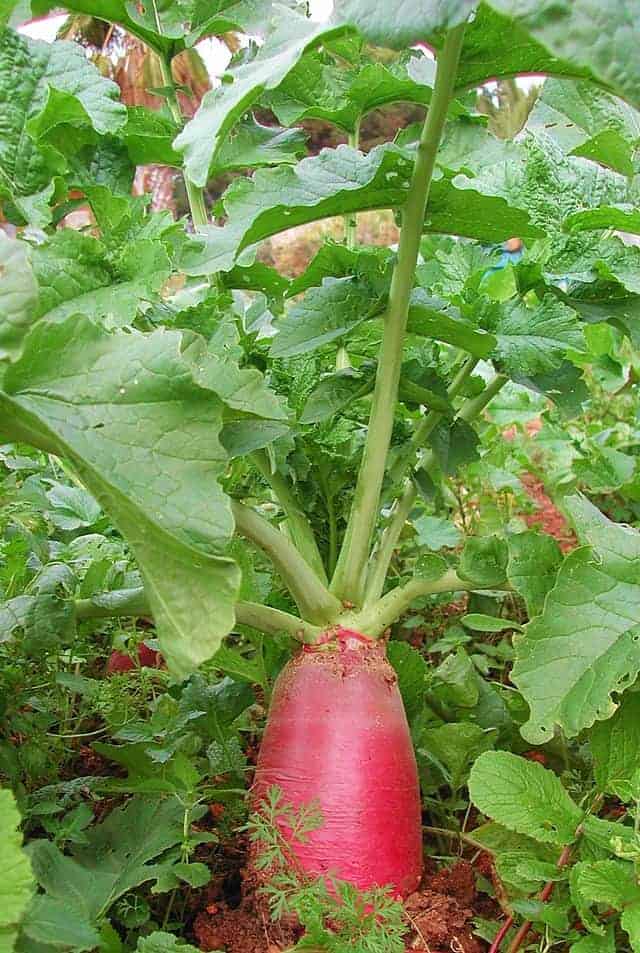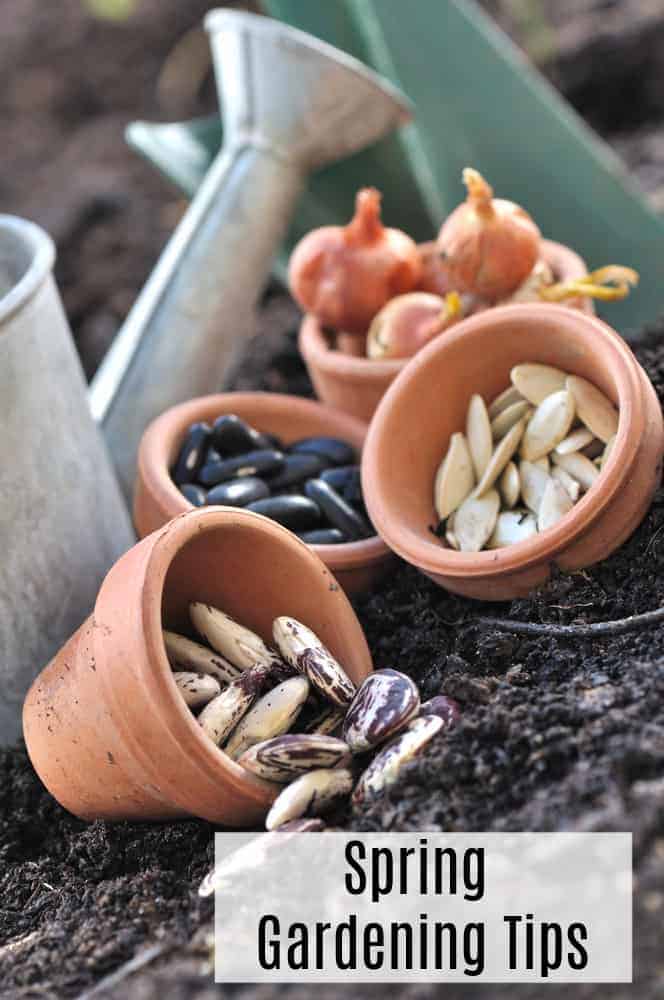Now is the best time to start researching the best plants for an early spring garden! February and March bring us a tad bit closer to being able to plant our spring garden. I look forward to days when the sun is warmer, the ground is softer and tiny little buds are started to poke out of tree branches.
The key to any successful spring garden is knowing when to begin planting. Obviously, your location plays a huge part in when those first plants get put in the ground. Before you decide to start planting your spring garden, check out The Farmer’s Almanac to figure out your average last frost date. This will give you a good idea of when to put your plants in the ground.
Knowing which plants do best in cooler temperatures will also help ensure your success. Putting in tomatoes and cucumbers while the air is still chilly will result in absolutely zero tomatoes and cucumbers. Here are a few of the best early spring garden plants for your vegetable garden.
Posts feature partner companies & may be sponsored. Post contains affiliate links & I will be compensated if you make a purchase after clicking on links. As an Amazon Associate I earn from qualifying purchases.

Table of Contents
8 Early Garden Vegetables to Grow This Month
Want to get a jump on gardening this spring? Here are some early spring garden plants that love cool weather.
1. Greens
Leafy greens of all varieties do best before the weather gets too hot. Spinach, lettuce, arugula, and even things like Swiss chard or kale will do well in cool temperatures. They don’t like frost, though, so make sure that you cover the plants at night with an old sheet if the temperature will be below freezing.
2. Cruciferous vegetables
This includes all members of the cabbage family. Vegetables like cauliflower, cabbage, garden cress, bok choy, broccoli, and Brussels sprouts all fall into this family. These plants tend to need quite a bit of nutrients in the soil so make sure you turn some compost into the garden soil before you plant. You can easily make your own compost. Just check out my list of things you should not compost before you get started.

✯Don’t want to miss the next post?✯
Follow Turning the Clock Back on Facebook | Twitter | Pinterest
Or join the private Facebook group for simple tips on going green!
3. Radishes
Radish seeds should be sown directly into the soil that they will live in….don’t try transplanting them from a seed starter or you won’t get too many radishes. Just sprinkle radish seeds lightly over the soil and cover them with just a small amount of soil.
They will need to be kept lightly damp so don’t let them dry out or over water. There are tons of different varieties of radishes that you can grow in your spring garden. I have good luck with Daikon radishes but your success may vary depending on location and soil.
4. Turnip
Turnips are some of the most useful early spring garden plants because you can eat the root AND the leaves. Plant turnip about 2 weeks BEFORE the last frost date. In order to achieve a healthy turnip crop you will need to keep the soil consistently damp throughout its entire growing season. If you want to eat the greens, they will be the most tender if you plant them in fertile soil.

5. Beets
You can sow beet seeds as soon as you can actually work the soil. They will grow best in well-drained and slightly sandy soil. Don’t add fertilizers with a lot of nitrogen in them or you will get more ‘greens’ than you will ‘beet’.
Make sure the soil is loose and well aerated and keep them consistently moist throughout the entire growing season. Make sure to keep the beds weed-free to avoid competition for nutrients.
Beets will germinate in about 14 days, and you should expect a harvestable crop within 60-70 days from planting. Harvest when the beets are about two inches in diameter by pulling gently with your fingers or using a hand trowel to loosen them. Check out my post on the best beet recipes if you are wondering what to do with them all.
6. Asparagus
Asparagus is best planted in early spring when the soil has warmed up and can be worked. It prefers well-drained, sandy loam soil with plenty of organic matter. Work in plenty of compost or aged manure to enrich the soil.
Dig the trenches about eight inches deep and space them so that each plant will have a foot or more of space on all sides. Plant the crowns (the root system) into the trenches with the buds pointing up and spaced about a foot apart.
Asparagus should be mulched to keep the soil cool and moist in summer, which can help extend its season. Expect harvests within three years of planting. (yes… years. be patient!)
Be sure to harvest spears in the spring before they become too thick and woody. Use a knife to cut them at ground level, then twist or pull them out of the soil. Enjoy your harvest! Try them in my favorite asparagus pasta salad recipe when your harvest is abundant.

7. Peas
Peas can be planted in early spring or late summer. They do best when the soil is well-drained, cool, and high in organic matter. Dig shallow trenches about an inch deep and space them so that the plants will have 2-3 inches between them. Plant the seeds about an inch apart, then cover them with soil.
Mulch with straw or grass clippings to keep the soil moist and discourage weeds. Make sure you give them a trellis to grow on. They like to grow UP! Expect harvests within three months of planting.
Be sure to pick peas regularly for the best results, as soon as they reach their mature size. Be gentle with picking them off the vine. Too much force stresses out the plant and may reduce yield. (or this may be an old wives tale… but I like to err on the side of caution!)
8. Rhubarb
Rhubarb is a hardy perennial that can be planted in the garden. Prepare the soil first with compost and manure to make sure it is well-drained. Make sure you put it somewhere that it will not be disturbed since it will come back year after year.
Water your rhubarb regularly, especially during dry spells. Fertilize it twice a year, once in spring and again in early summer, using an organic fertilizer such as fish emulsion. Harvest the stalks when they are about 12-18 inches long and be sure to leave plenty of them on the plant for future harvests.
Make sure you cut off just the stalk at its base, leaving the crown intact; this will ensure it comes back again each year. Do not eat the leaves, only the stalk.

More Spring Garden Tips
Looking for more tips for growing a spring garden? Read a few of these posts as well:
- Spring garden chores: Wondering what to do in the garden in spring to get it ready for planting? Read my post on spring garden chores for this month.
- Tips for preparing your spring garden: From soil amendments to the best garden supplies, read my article on preparing your garden for spring.
- How to keep animals out of the garden: Before you start digging that bed, learn how to keep animals out of your garden.
Have you started planning a spring garden yet?

Diane is a professional blogger and nationally certified pharmacy technician at Good Pill Pharmacy. She earned her BS in Microbiology at the University of New Hampshire and has worked in cancer research, academics, and biotechnology. Concern over the growing incidence of human disease and the birth of her children led her to begin living a more natural life. She quickly realized that the information she was learning along the way could be beneficial to many others and started blogging and freelance writing to share this knowledge with others. Learn more about her HERE.

Very helpful. What about peas and beans? I can never remember which should be planted on St. Patrick’s Day.
Snow peas should be planted early and traditional ‘green beans’ are a summer produce and do best when soil and air are warmer. At least, that is what I do!